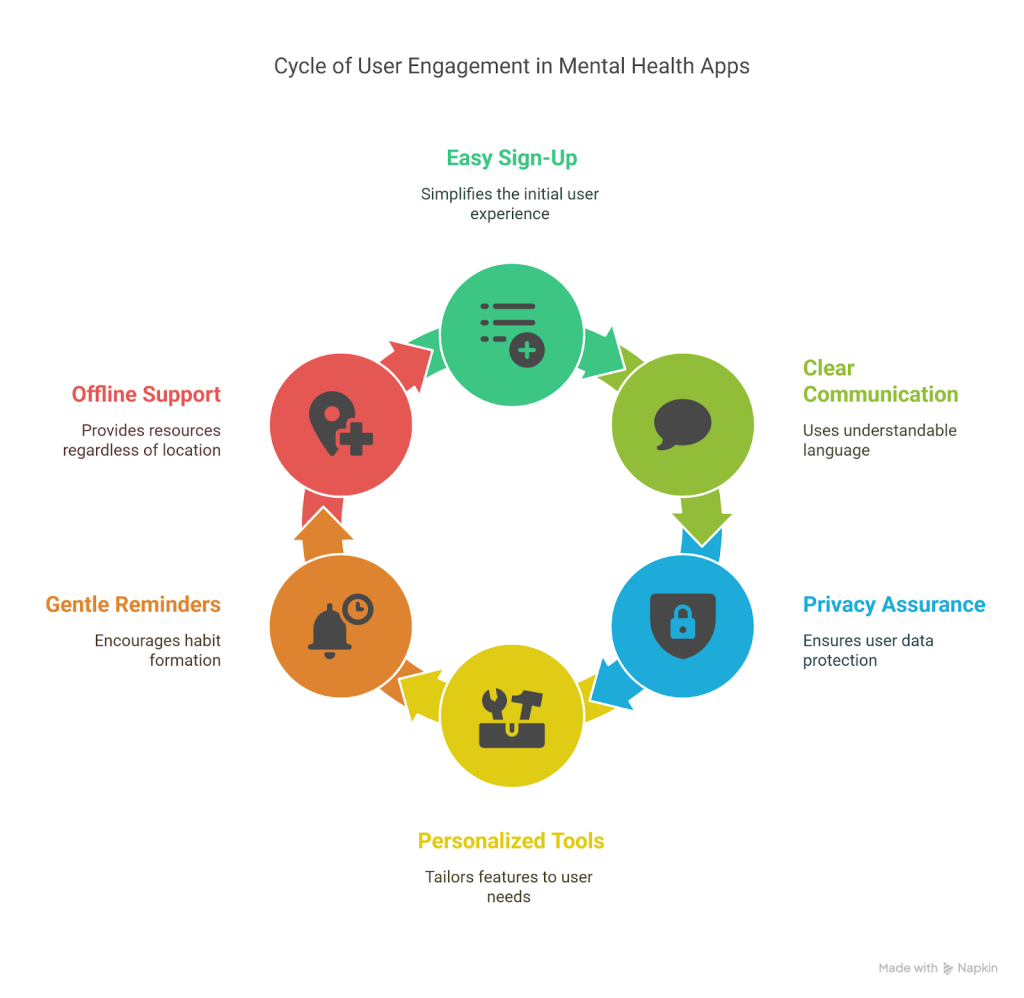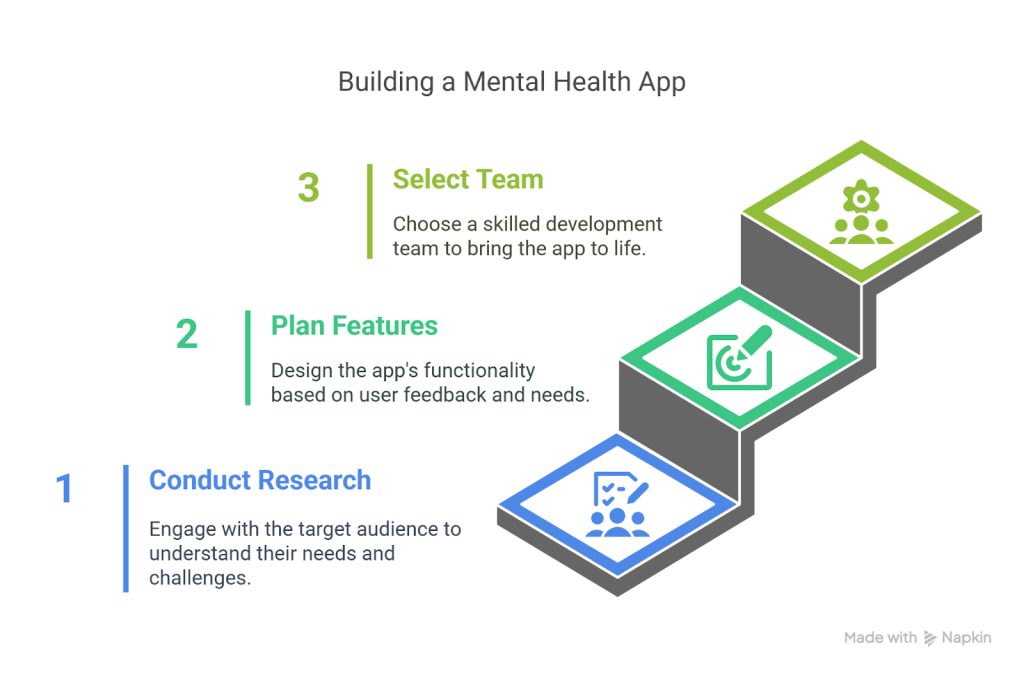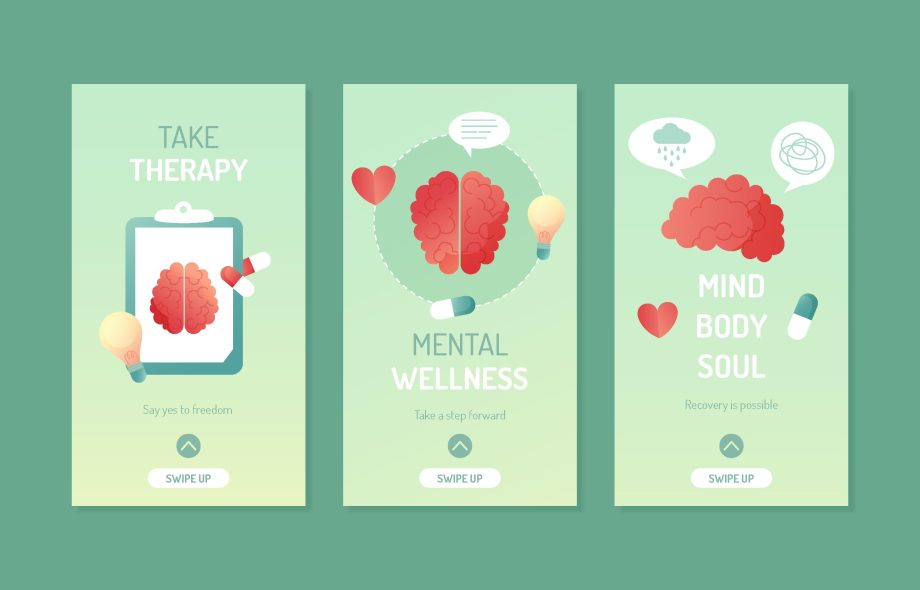Developing mental health apps for particular groups is a wise choice. If someone is feeling sad, worried or stressed, an app that helps them can be very helpful. They are designed to assist a particular group such as teenagers, new mothers or veterans. Because the app is made for just one group, it can provide them with tools that fit their specific needs.
In this blog, we will discuss what makes these apps different, who benefits from them and how to build one step by step. You’ll discover the benefits of a focused method and how teams build features that are useful for users. If you ever wanted to develop a mental health app, this guide will walk you through all the steps in easy language.
What Are Niche Mental Health Apps?
Niche mental health apps are designed to help a certain group of people. Unlike most apps that help everyone, these apps are designed for specific people such as students preparing for exams or new parents. When content and features are adjusted, users feel more connected and find them more helpful.
A teenage anxiety app could use fun graphics and quick quizzes, whereas a PTSD app may help by teaching breathing techniques and showing safe place pictures. The goal is to use language the user understands and provide the right assistance, so they feel everything is tailored to them.
Also Read: Mental Health App Ideas
Why Are Niche Mental Health Apps Important?
Everyone’s experience with stress and mental health is different. A general app can give you some basic tools, but it won’t be able to handle all your needs in detail. Niche apps are designed to offer specific solutions that allow users to feel recognized. Doing this helps you trust the app and use it regularly which is important for your mental health.
Furthermore, when a special group is targeted, developers can test and research features that are useful for them. They can use what users say to improve the app as time goes on. At the end of the day, niche mental health apps are more successful since they address the right issues in the right manner.
Who Can Benefit From These Apps?
Every day, kids and teens deal with school pressure, issues with friends and social media stress. An app created for them can use colorful designs, easy words and enjoyable activities to help them learn how to cope. If young people believe an app is tailored to their lives, they are more likely to use it and spread the word to others.
At the same time, new mothers can experience exhaustion, mood swings or baby blues. An app designed for moms can remind you to care for yourself, guide you in quick meditations and let you chat with other moms. This help can make mothers feel less lonely and manage their busy days better.
Features That Make Niche Mental Health Apps Great
First, these apps ensure that signing up is very easy. A fast setup process encourages more people to stay on your platform. They speak in a way that is easy to understand, even if you are having a hard day. Your privacy is always taken seriously and you have complete control over your data.

In addition, the tools are designed to fit each user’s requirements. Some mood trackers have emojis for teens and adults may find guided journaling helpful. Gently reminding yourself often helps you develop good habits. Users can still find help offline, no matter their location.
Steps to Build a Niche Mental Health App
The first thing to do is research. Talk with those you wish to support. Find out what they face every day and what help they require. You can learn a lot about your app’s design from surveys, interviews and small focus groups.

After that, you need to plan the features. Pick the tools that will be most helpful for your audience- breathing exercises, keeping a mood log, getting supportive messages or chatting with peers. Make simple drawings to show how the user will navigate the app. After that, select a team of experts such as the top app development company in India, to make your idea a reality.
Designing With Care
Design is just as important as the tools themselves. Choose friendly colors, make your buttons big and use clear fonts. Make sure each screen is not too busy, so users don’t get confused. Having calm animations or soft sounds can help the experience feel more soothing.
Consider accessibility at all times. Make sure the text is big enough and that users can easily use the screen. Keep in mind the cultural backgrounds of your audience when making your message. A design that is both welcoming and safe will encourage users to return.
Role of an App Development Company
To build an app, you must write code, test it and handle details on various devices. Working with a skilled Android app development company in India can help you move forward smoothly. They are familiar with the best technical methods for Android and can help with user experience.
They are responsible for everything from the first design to the final launch. They run the app on many devices, fix any issues found and make sure everything runs smoothly. After the app is released, they can offer continued help, updates and new features based on what users tell them.
Common Mistakes to Avoid
Many developers make the mistake of making their app overly complex. If users find too many buttons, too many options or long forms, they might give up on the app. Always make the steps easy and straightforward. Let real people try out your site to find out where they get lost.
Another mistake is not paying enough attention to user privacy. Since mental health is delicate, it’s important to use strong encryption and clear data policies. Always get permission before gathering information and allow users to decide what they want to share. Any app in this industry needs to be trusted by users.
Real-Life Examples of Niche Mental Health Apps
Calm Harm is designed to help teens who have thoughts about self-harm. It gives you fast and safe ways to deal with strong emotions. Because the app has a simple design and clear instructions, young people can use it easily when they require help.
PTSD Coach is intended for veterans and anyone else who experiences post-traumatic stress. It helps with breathing exercises, tips for managing symptoms and a personal diary. PTSD Coach is able to provide content that really speaks to its users because it focuses on one group.
Must Read: Cost to Develop a Self-Care App Like Happify
The Future of Niche Mental Health Apps
In the future, mental health apps will get smarter and more responsive to users. Picture apps that can chat with users and recommend exercises based on their mood or how they sound. More people will be able to use apps as local-language support increases.
Virtual reality therapy, games designed for therapy and online communities will be used more widely. As phones and wearables collect more health information, apps can give you more tailored help. There is a lot of promise for niche mental health apps to help people live better and happier lives.
Conclusion
These apps give specialized support that other mental health apps do not provide. These apps focus on a particular group such as teens, new parents or veterans which helps them gain trust and offer the right support for real improvement. All stages of research, design, launch and updates play a role in making an app that is truly helpful.
If you want to make a difference, begin by learning about your audience, designing useful features and teaming up with a good app development team. Your idea might offer support and strength to many people at the times they need it most.


 :
: